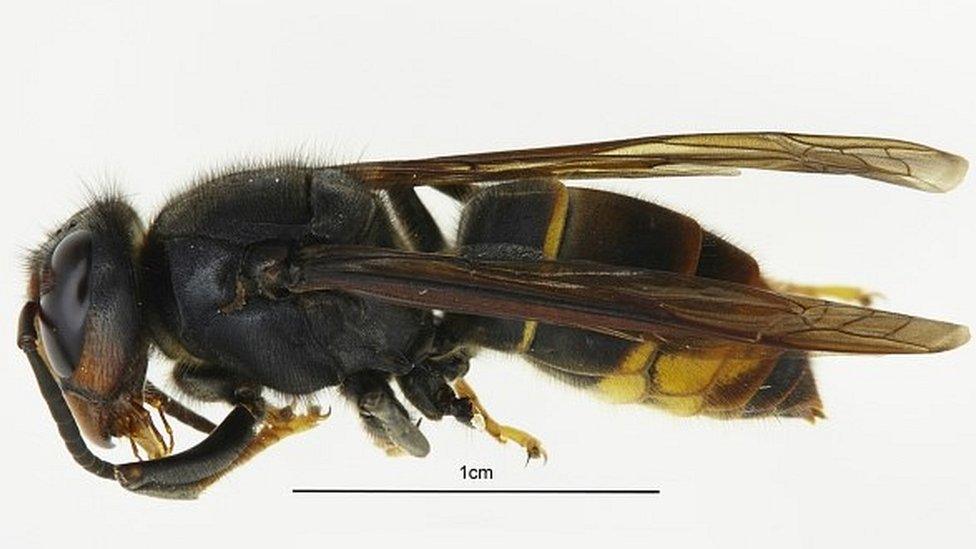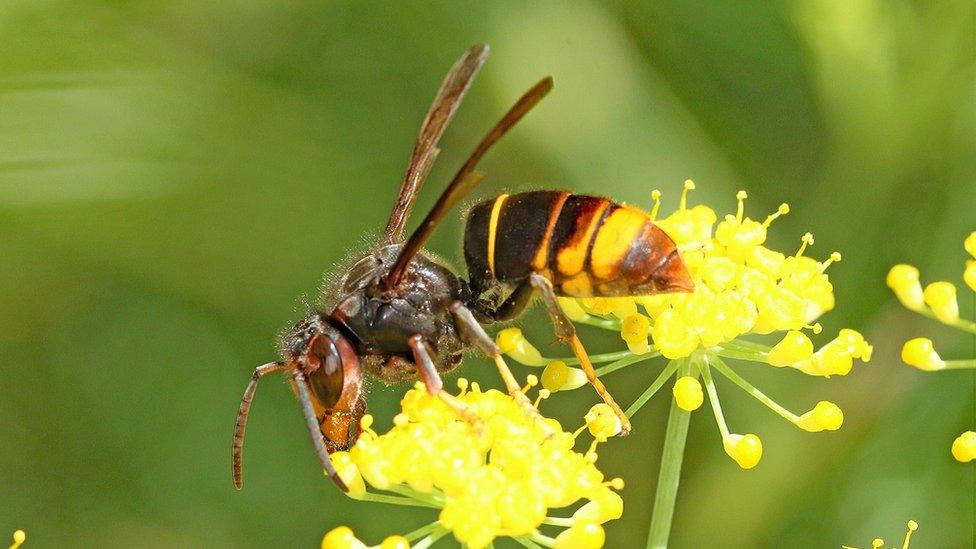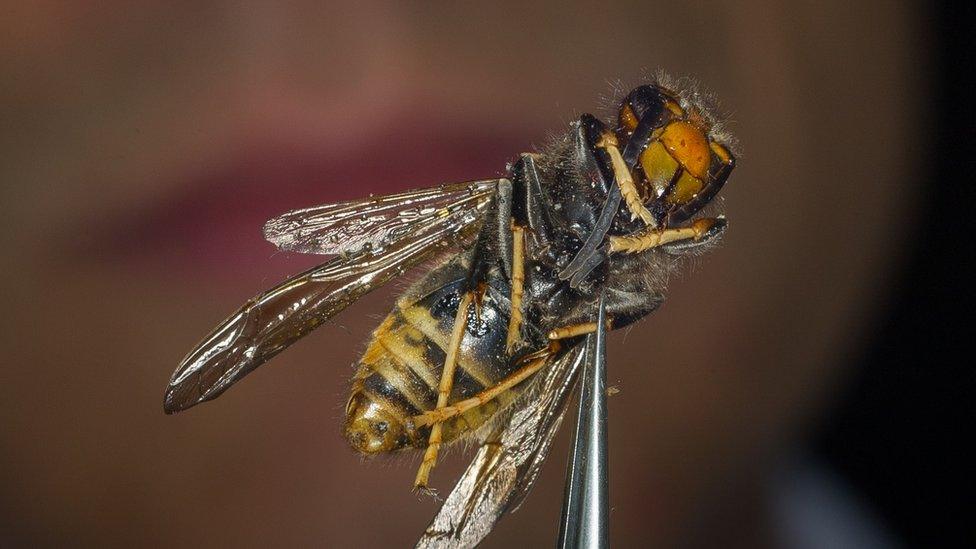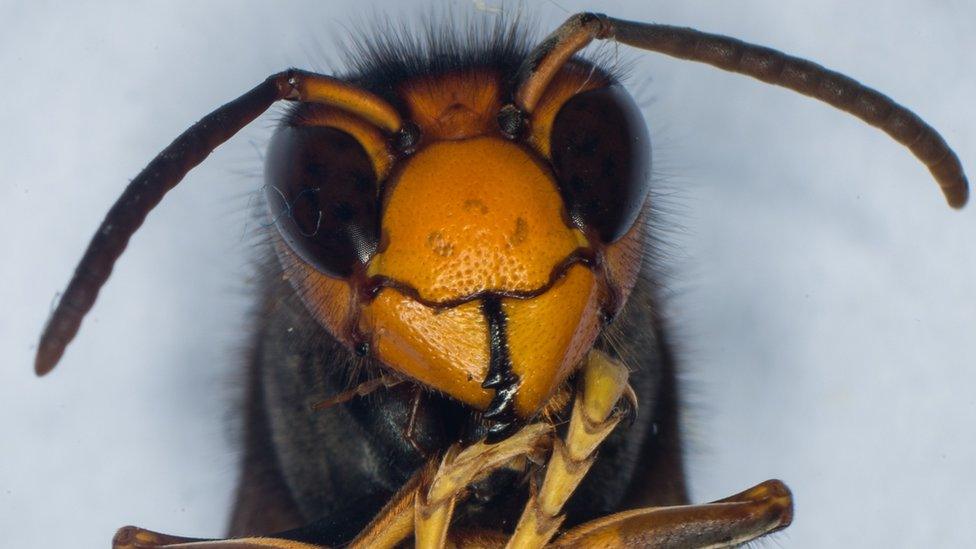Invasive Asian Hornet spotted in Britain for first time, experts confirm
- Published

Asian hornets prey on pollinating insects such as honey bees and could do serious damage to colonies in the UK, which have not evolved to cope with the threat
An invasive hornet that kills honey bees has been spotted in Britain for the first time, experts have confirmed.
The Asian hornet was found near Tetbury, Gloucestershire. Work is under way to find and destroy its nests.
The Department for Environment, Food and Rural Affairs (Defra) has set up a three-mile (5km) surveillance zone.
Defra said it had been anticipating the hornets' arrival "for some years" and had a "well-established protocol in place to eradicate them".
The Asian hornet (Vespa velutina), which is up to 2.5cm (1in) long, is now common across Europe after being accidentally introduced to France in 2004 in a shipment of pottery from China.
In the summer, the non-native species was discovered in the Channel Islands of Jersey and Alderney for the first time.

It is thought the hornets will not be able to survive in the north of the UK due to the colder winters
Nicola Spence, from Defra, said: "It is important to remember they pose no greater risk to human health than a bee, though we recognise the damage they can cause to honey bee colonies.
"That's why we are taking swift and robust action to identify and destroy any nests."
How the government is trying to trace nests of invasive hornet which kills honey bees
A Defra spokesman said, the hornet found in the Tetbury area had been killed and was undergoing DNA testing to establish how it arrived in the UK.
Meanwhile, bee inspectors are using infrared cameras and traps in a bid to locate and destroy any nests in a three-mile area radius around the initial sighting.

Identifying an Asian hornet
Vespa velutina queens are up to 3cm (1.2in) in length; workers up to 2.5cm (1in)
Entirely dark brown or black velvety body, bordered with a fine yellow band
Only one band on the abdomen: fourth abdominal segment almost entirely yellow/orange
Legs brown with yellow ends
Head black with an orange-yellow face
Source: National Bee Unit

- Published17 August 2016

- Published22 July 2016

- Published21 May 2016

- Published10 October 2014
